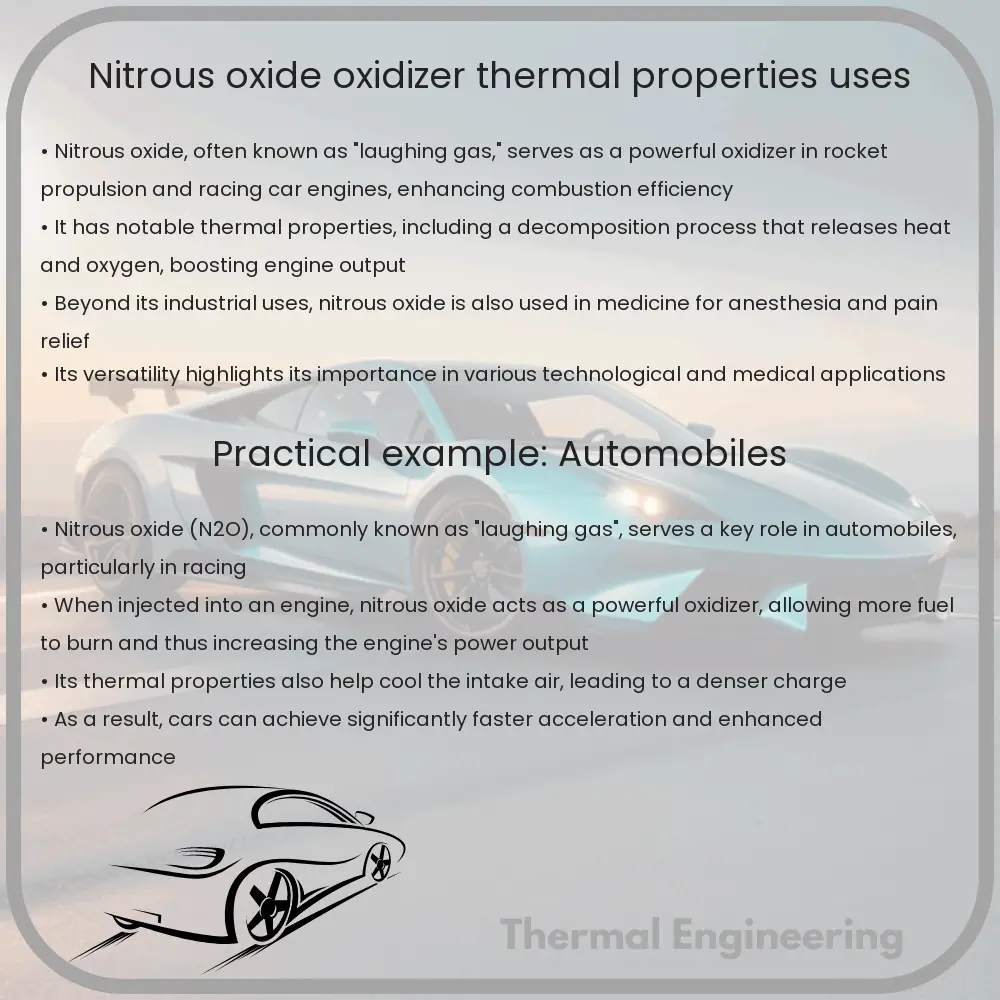Explore the diverse applications and properties of nitrous oxide, from medical anesthesia to its crucial role in automotive and aerospace engineering.

Introduction to Nitrous Oxide
Nitrous oxide, commonly known as laughing gas, has significant applications beyond its well-known use in dental anesthesia. Chemically represented as N2O, this colorless and non-flammable gas plays a critical role in both medical fields and various engineering domains, particularly in automotive racing and aerospace engineering.
Chemical and Physical Characteristics of Nitrous Oxide
Nitrous oxide is a potent oxidizer, which means it can enable the combustion of fuel without the need for external oxygen. This property is crucial in applications where oxygen supply is limited or controlled, such as in rocket motors and high-performance engine systems. The molecule comprises two nitrogen atoms and one oxygen atom, and it exists in a gaseous state at room temperature.
With a boiling point of -88.48°C, nitrous oxide becomes liquid under high pressure or at very low temperatures. Its critical temperature, which is the temperature above which it cannot be liquefied regardless of the pressure applied, is 36.4°C. This makes N2O highly versatile in various thermal environments.
Uses of Nitrous Oxide
- Medical Uses: Nitrous oxide is widely used as an analgesic and anesthetic in medical settings. It helps in pain reduction and sedation during dental procedures and childbirth.
- Automotive and Aerospace Engineering: In the realm of engineering, N2O is primarily used to enhance the power output of engines. In automotive racing, it is injected into the engine air intake system, where it decompresses and cools the intake air, effectively increasing the air’s density and allowing more oxygen to enter the engine for combustion. This boosts the engine’s power temporarily.
- Food Industry: Nitrous oxide is also used as a propellant in food packaging and an aerating agent in whipped cream dispensers, owing to its inert properties.
- Rocket Propulsion: In aerospace, N2O serves as an oxidizer in hybrid rocket engines. It can be stored as a liquid, which simplifies the fuel system compared to gases that need to be stored at higher pressures.
Thermal Properties and Engineering Applications
The specific heat capacity of nitrous oxide contributes to its utility in high-performance applications. It allows engines to perform more efficiently due to its cooling effect during expansion. Moreover, the decomposition of N2O at high temperatures yields additional oxygen, which is extremely beneficial in closed combustion systems, enhancing the overall thrust in aerospace applications.
In summary, nitrous oxide’s role extends beyond the confines of medical use, playing a pivotal part in enhancing performance and efficiency in engineering applications. Its unique properties, such as being a potent oxidizer and having variable physical states under different temperatures and pressures, make it invaluable in diverse fields such as automotive racing and rocket propulsion.